Introduction
A researcher named Herman Pontzer is rekindling debates about the role of exercise in weight loss. He has a lot of peer-reviewed studies on anthropology and energy metabolism, has recently published a popular book called Burn, and if you YouTube his name, you’ll find numerous interviews with catchy titles like ‘Professor Exposes The Big Myth About Weight Loss’ or ‘The Ugly Truth About Exercise and Weight Loss’. His book subtitle is also that ‘New Research Blows the Lid Off How We Really Burn Calories’. These claims are bound to catch people’s attention, and they have.
Beneath the catchy titles, Pontzer is trying to spread awareness of his new energy expenditure model that differs greatly from conventional opinion. Whereas daily energy expenditure is generally accepted as an additive model—where adding daily activity linearly increases total daily energy expenditure (TDEE)—Pontzer claims this model is wrong. In its place, Pontzer argues for a constrained energy expenditure model—where physiological adaptations constrain our TDEE to a narrow range regardless of lifestyle (including exercise levels). He hypothesises that our TDEE is “more a product of our common genetic inheritance than our diverse lifestyles” as we naturally compensate for exercise by reducing non-exercise activity expenditure (NEAT) and resting metabolic rate (RMR).
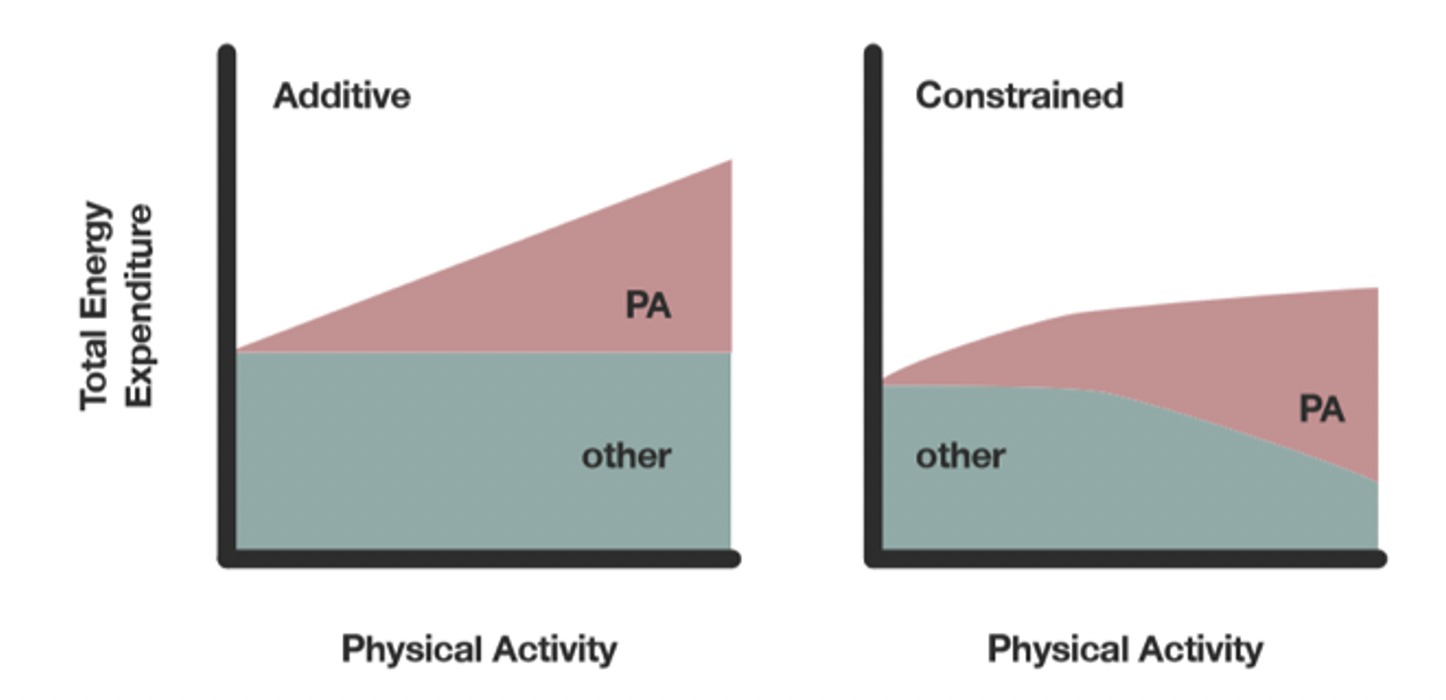
And if you think that’s news to the system, the logical extension of the constrained model might be even more surprising. Pontzer views exercise as little to no use for weight loss and claims that “weight loss is all about diet”. On pages 166 – 167 of Burn, he states that “increasing daily activity through exercise or other programs will ultimately have little effect on the calories burned per day” and that “…the standard line—that exercise helps us burn more calories—is wrong”, and that “[exercise] just won’t do much for your weight”. Pontzer also responded to my Twitter poll where I asked people whether they thought exercise increases TDEE and promotes weight loss. He had a firm response by saying that if you answer yes, you “don’t know the data”—a harsh blow to the 75% of responders who answered yes.
Critiquing the Expert
Don’t be mistaken that Pontzer is the expert in this field; the constrained model hasn’t been plucked from the realms of Quackery. Pontzer has probably researched this area as much as anyone. But that’s precisely what makes what I’m about to say the more controversial: I disagree with him strongly. I respect Pontzer’s work and we certainly agree that increasing exercise expenditure doesn’t necessarily cause commensurate increases in TDEE, but we diverge in our broader interpretations of the research on exercise, TDEE, and weight loss.
The first issue I have is with the undefined and inconsistent nature of Pontzer’s constrained model. At times he will state that exercise is unhelpful for changing TDEE at all; other times he will say the constrained model acknowledges some potential for TDEE to increase with low amounts of exercise but only by 100 – 200 kcal “at the very extremes of sedentariness“; other times he will provide evidence that maximum energy compensation is on the order of 600 kcal per day and so “a person can exercise so much that they exceed the body’s ability to compensate”. Hence it isn’t easy to nail down Pontzer’s exact stance even after engaging him directly. Presumably what he means is that within normal exercise ranges when exercise expenditure is typically up to 600 kcal per day, rather than seeing commensurate increases in TDEE, we only find that highly sedentary individuals increase their TDEE by just 100 or 200 kcal, if not zero. In other words, generally moderate to high exercise doses (presumably 200 – 600 kcal per day) are probably not superior to doing little to no exercise (presumably < 200 kcal per day) if the goal is to increase TDEE.
The more pertinent issue I have, however, is regarding Pontzer’s take on exercise and weight loss. In contrast to Pontzer’s view, I think the bulk of scientific evidence indicates that exercise increases TDEE and promotes weight loss in most exercisers, and that clinically meaningful results (approximately ≥ 5% loss of body weight or more) occur when overweight individuals exceed current public exercise recommendations. Thus, I’ll be referring to the primary ecological and intervention studies of debate between Pontzer and myself from this point forward.
Pontzer et al. 2012
Let’s start by analysing Pontzer’s ecological study in the Hadza. This study got the ball rolling on the idea that exercise is of little to no use for changing TDEE and body weight. In short, Pontzer and colleagues travelled around the world to examine the TDEE and physical activity level (PAL) of Hadza foragers to test whether hunter-gatherers expend more energy than far less active populations, such as Westerners. The researchers measured TDEE using the gold standard method (doubly-labelled water), PAL by dividing TDEE by the estimated BMR (TDEE / BMR), and NEAT by using a “breath-by-breath’’ analysis (via a wearable respirometry system).
Based on the results of this study, Pontzer states that even though Hadza are far more active than Westerners, they “..are burning the same number of calories every day as men and women in the [United States], and that’s after you correct for body size”. I’ve heard this line repeated by Pontzer on numerous occasions and, presumably due to the shock value, it now gets perpetuated on social media to support the narrative that exercise is little to no use for weight loss. Pontzer claims this is an “important observation for how we think about things like how exercise affects energy expenditure, energy deficits, and weight, so there’s a whole set of consequences there”.
But I disagree for a simple reason: these claims are based on a fundamental misunderstanding between confounders and mediators in data analysis. Whereas Pontzer informed me that “the distinction between confounders and mediators is largely conceptual” and that “They would be treated the same in stats analysis such as the one used”, I think that the differences are defined and vitally important in all multivariate adjustment models. In contrast to a confounder variable that is thought to interfere with the causal relationship we’re interested in, a mediator variable is thought to be part of the causal pathway we’re interested in. Hence when it comes to statistically adjusting and removing the effect of a given variable in an analysis, this should apply only to the variables we can justify as confounders.
The issue, therefore, is that I don’t think Pontzer can justify his treatment of body weight and FFM as confounders of the relationship between lifestyle and TDEE. Treating them as confounders would be to claim that body weight and FFM are a cause of lifestyle rather than a product of it, which is highly controversial and probably wrong. Treating them as confounders also means Pontzer can’t claim to have found important observations for the (lack of) effect of exercise on body weight, as that inference was built into his statistical models; it wasn’t a result of them.
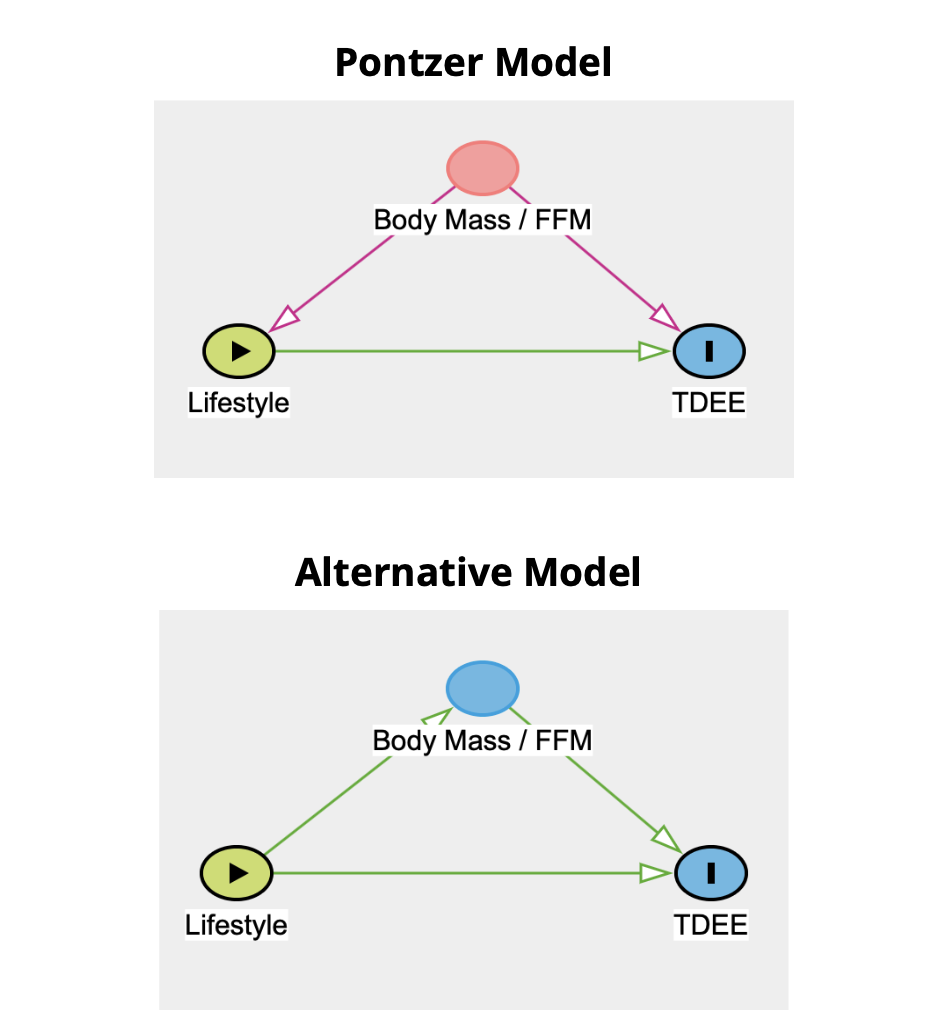
So needless to say that adjusting for body weight and FFM in Pontzer’s models would have changed the results dramatically. Doing so would have taken the biggest determinant of TDEE and the biggest characteristic difference between populations (a massive 30 – 31 kg difference in body weight) out of the equation without justification.
I’ll also note that even if you think I’m profoundly wrong and that Pontzer’s causal models are correct, there were two types of multivariate analyses ran in the study: an ‘among individual’ analysis and an ‘among population’ analysis. And although Pontzer’s narrative of “no lifestyle effect” is based on the among individual analyses, he did report a statistically significant association between lifestyle and TDEE (P = 0.02) in the among population analysis (using the population means of Hadza, Market populations (including Westerners) and Farmers) when adjusted for body mass, sex, and age. So even though I think the multivariate analyses are indeed overadjusted, there would still be evidence of lifestyle’s association with TDEE even if I’m wrong. Surprisingly, this finding wasn’t mentioned in the results or discussion section of the paper or in Burn; it’s only found at the end of the supplementary data.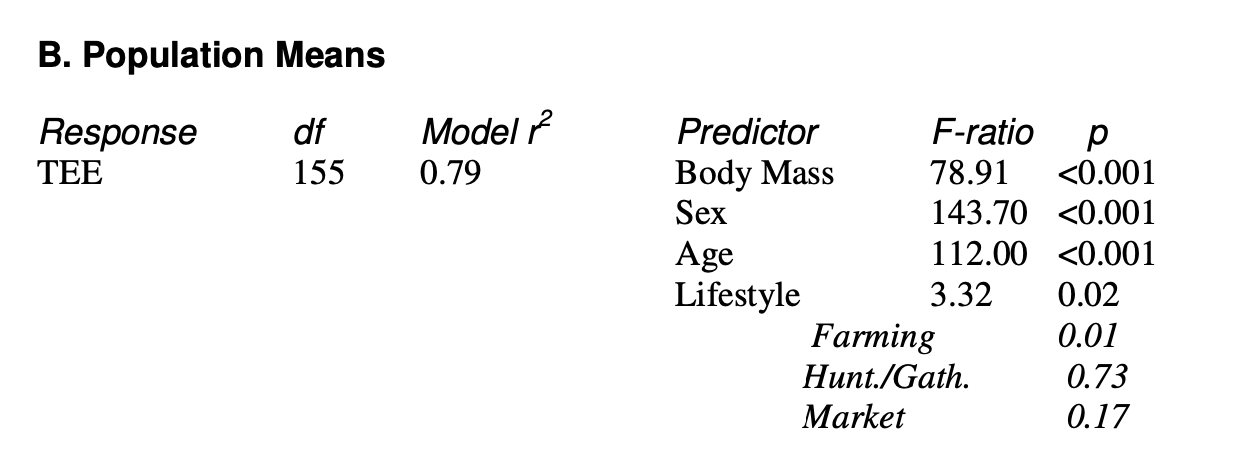
Human Intervention Studies
But obviously Pontzer doesn’t just rely on his ecological study to support his narrative that exercise is of little to no use for weight loss. He also has a few go-to exercise intervention studies to support his claims. Specifically, he likes to claim that exercising for one year or more only leads to 0 – 2 kg of weight loss, on average, with reference to a 2014 narrative review by Swift et al. on the role of exercise in weight loss and maintenance (reference 16 in Burn). This might sound pretty convincing, until we inspect the review in question. The narrative review references four exercise studies to support the claim, all of which aren’t persuasive.
In the first two studies, The Studies of a Targeted Risk Reduction Intervention through Defined Exercise Study (STRRIDE), and The Diabetes Aerobic and Resistance Exercise Study (DARE), the methods included dietary counselling so that participants wouldn’t experience weight loss during the intervention. This fact alone makes these studies borderline useless in exercise and weight loss discussions. They were both more focused on changes to various health markers and body composition independent of body weight—although, side note, there was still significant weight loss (P < 0.05) in the exercise groups compared to the sedentary control groups in both studies.
In the next two studies, The Dose Response to Exercise in Women Study (DREW), and The Inflammation and Exercise Study (INFLAME), the exercise intervention was so modest that TDEE and weight loss were predictably small even based on the additive energy expenditure model. The exercise groups had a predicted daily increase in TDEE of just 48 – 146 kcal in DREW and 199 kcal in INFLAME. Consequently, the weight loss predictions were only 1.1 – 3.1 kg in DREW and 2.4 kg in INFLAME. These figures convey the main problem: small change, small result. Therefore, attempts to zone in on the small weight loss in these studies (0.4 – 2.4 kg) doesn’t bring anything particularly interesting to the table. Weight loss was expectedly low based on the additive models that Pontzer is contesting.
Even Swift et al. included a review section to explain why weight loss is often small. The authors point toward an energy balance analysis study of 15 aerobic [exercise training] interventions from Thomas et al., saying they “concluded that the major factors limiting the expected weight loss from aerobic [exercise training] were dietary compensation and low aerobic [exercise training] dose.” In fact, Swift et al. also clarify that weight loss is considerably greater when higher exercise doses are used. They cite the Midwest Exercise Trial (MET-1), which observed 5.3 % weight loss after 16 weeks of aerobic [exercise training] with an average daily energy expenditure of ~286 kcals. They also cite a couple of exercise intervention studies from Ross et al., which observed 6.8 – 8% weight loss in 12 – 14 weeks with an average daily exercise expenditure of 500 – 700 kcal per day. So, while simply exercising obviously doesn’t necessitate considerable changes in TDEE and weight loss, I think it’s fair to say the benefits are clinically significant when the exercise dose is sufficient. The devil is in the dose.
The Devil is in the Dose
What I found most interesting while reading Burn, though, alongside many of Pontzer’s social media interactions, is that he actually uses some popular long-term (9 – 16 months) interventions with higher exercise doses (> 200 kcal energy expenditure per day) to solidify his claims. Specifically, he regularly points toward Westerterp et al., MET-1, and the Midwest Exercise Trial 2 (MET-2) as evidence that moderate to high exercise still have little if any effect on increasing TDEE and promoting weight loss.
But it’s at this point that I get lost in translation because, at least on the whole, these interventions clearly oppose Pontzer’s views. I’ll summarise:
TDEE
- For Westerterp et al., in the participants who completed the study, there were significant increases in the median daily TDEE of men and women by 669 kcal (P < 0.01) and 430 kcal (P < 0.05), respectively. These figures aligned closely with my estimated TDEE increases of 205 – 625 kcal per day based on the additive energy expenditure model (calculated by using mean body weight in men and women and assuming ~ 5 kcal expenditure per lb body weight per hour of running).
- For MET-1, male and female exercisers increased their TDEE by 371 kcal and 209 kcal per day, respectively. There was no within-group significance testing in this study other than the authors noting that “changes in 24-hour energy expenditure were significantly related to the energy expenditure of exercise”. As the predicted daily increase in exercise expenditure was ~471 kcal in males and ~314 kcal in females at month 16, the actual TDEE increases were between 66 – 78% of the predicted values from the additive energy expenditure model.
- For MET-2, moderate exercisers increased their TDEE by a nonsignificant 191 kcal (P = 0.10), and high exercisers increased their TDEE by a significant 289 kcal (P = 0.01). As the predicted daily exercise expenditure was ~286 kcal and ~429 kcal in the moderate and high exercise groups at month 10, the actual TDEE increases equated to ~66% (in both groups) of the predicted values based on the additive energy expenditure model.
As a summary of these studies, then, I cannot reconcile the position that exercise has little to no effect on TDEE. When the exercise dose is moderate to high even by what’s typically regarded as ‘normal’ (200 – 600 kcal per day), there are clear increases in TDEE (191 – 669 kcal) that are no less than 66% of predicted increases from the additive model. Don’t get me wrong, I have little doubt that some degree of energy compensation exists, but this doesn’t stop exercise from causing meaningful increases in TDEE. We should also remember that increases in TDEE occurred whilst participants were losing body weight, which is a process that is typically predictive of TDEE reductions (primarily BMR reductions) due to having less metabolically active body tissue.
On the topic of weight loss, let me summarise those results too..
Weight Loss
- For Westerterp et al., exercising men lost a significant 1.8 kg of body weight (P < 0.01) and exercising women lost a nonsignificant 2.0 kg of body weight (P > 0.05). Granted, not large amounts of weight loss by anyone’s standards, but we shouldn’t expect considerable weight loss when almost all participants were in the healthy BMI range (19.4-26.4 kg/m2). At baseline, mean body weight was only 70.4 kg in men and 62.5 kg for women in those who completed the exercise trial. This wasn’t a weight loss study and there simply wasn’t much weight to lose.
- For MET-1, male exercisers lost a significant 5.2 kg (P < 0.05) and the female exercisers gained a nonsignificant 0.6 kg (P > 0.05; 100% FFM). The latter result may come as a surprise, which it is, but consider that the female control group gained a significant 2.9 kg (P < 0.05) by not exercising. In other words, male exercisers had clinically significant reductions in body weight, while exercising just kept females lighter than if they had remained sedentary. Consequently, there was a significant 4.8 – 5.2 kg difference (P < 0.05) in the body weight of both male and female exercisers compared to the sedentary control group at the end of the exercise trial.
- For MET-2, the average weight loss from exercising was clear across the board. Males and females in the moderate exercise group lost between 3.9 – 4.1 kg, and males and females in the high exercise group lost between 4.4 – 5.9 kg. There was no within-group significance testing in this study, but both exercise groups had significant differences in bodyweight change compared to the sedentary control group (P < 0.01), who put on 0.5 kg. The high exercisers also reduced their body weight by a nonsignificant 2.1 kg more (P > 0.05) than the moderate exercisers by expending an additional ~143 kcal per day.
As a summary of these studies, then, alike to my view on exercise and TDEE, I cannot reconcile the position that exercise has little to no effect on weight loss. When a sedentary control group was included, there were always significant differences in body weight favouring the exercise group by at least 4.8 kg. Compared to baseline, weight loss from exercise ranged between 1.8 – 5.9 kg in 7 of the 8 relevant analyses across the 3 analysed studies, trending toward the higher end of this range if participants were overweight. Only 1 of the 8 relevant analyses found no weight loss from exercise, which happens to be the finding that Pontzer emphasises the most in his writings.
Finding Common Ground
I don’t want it to come across like me and Pontzer can’t find any common ground, though. We can.
Firstly, I’d agree with Pontzer that weight loss from exercise doesn’t always match predictions from the additive model. If this is something that Pontzer feels should be communicated more to the masses, then I’m all for it. I would say, however, that this is answering a different question as to whether exercise causes a meaningful net weight loss benefit. Additionally, I also think that it’s too early to speculate about why predicted versus actual weight loss can mismatch. Pontzer is of the opinion that unconscious constrains to TDEE are the main culprit (reductions in NEAT or RMR), but narrative and systematic reviews state there’s too many missing pieces of data (such as energy intake and NEAT measures) and we’re too reliant on inappropriate measurement tools (FFQ’s and step counters) to pinpoint what the primary form of compensation is. Recent RCT’s have also made the case that increases in energy intake are probably more impactful than reductions in NEAT or BMR, but more research is needed. If I can add my own two cents, I’d also say there might even be an inherent fault with assuming energy balance neutrality within common weight loss predictions. As we typically study overweight and sedentary participants, who we might reasonably assume overeat relative to their expenditure, then predicted exercise expenditure calculations might overestimate the actual energy deficits induced by exercise.
Secondly, I’d agree with Pontzer that not everyone will lose weight from exercising. If this is something Pontzer feels should again be communicated to the masses, then I’m again on board. There is another ‘but’, however, as I think the primary focus should still be that most people lose weight from exercising, not some, even if individual variation exists. Studies such as MET-2 show that some people don’t lose weight (~23%), sure, but the vast majority of exercisers do (~77%), and over half (54 %) of exercisers lose a lot (> 5% starting weight). Another exercise study from King et al. further supports this view.
MET-2
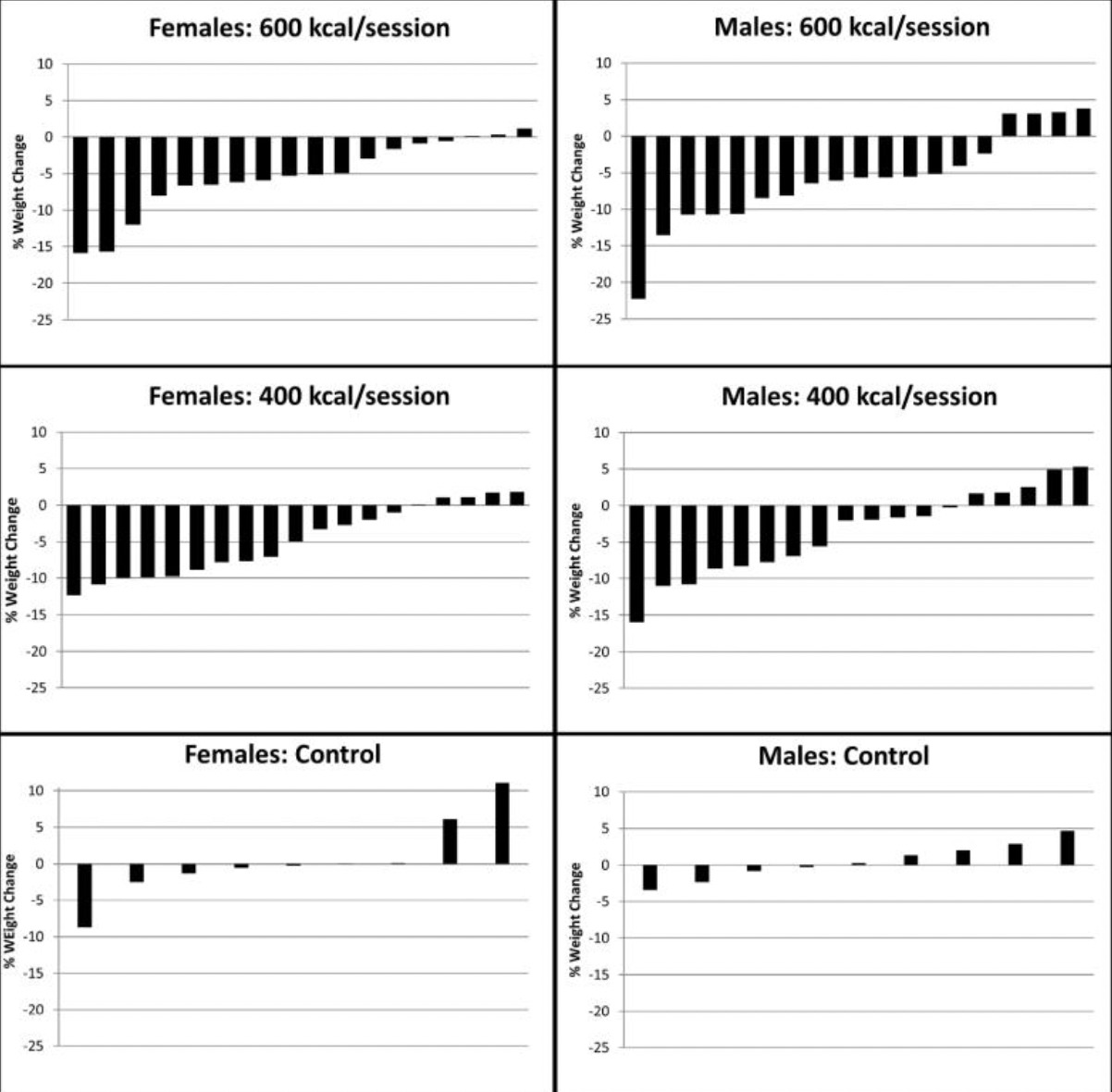
King et al.
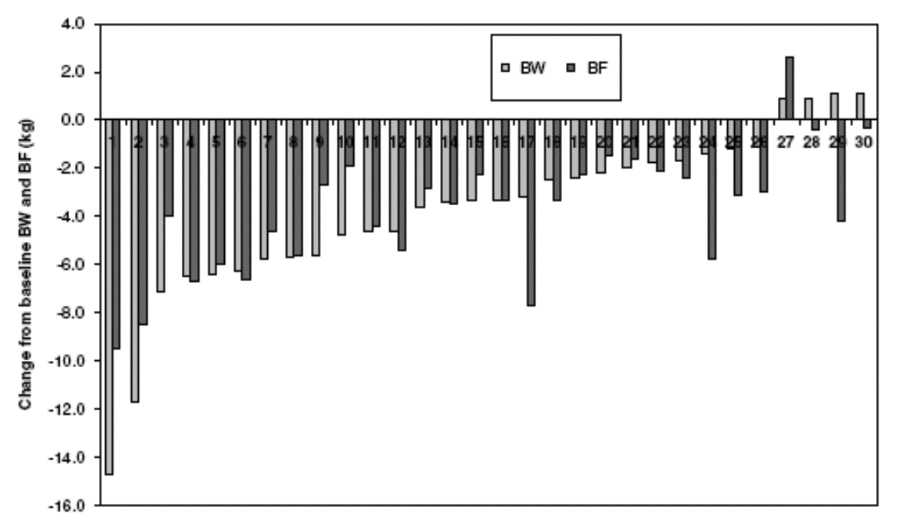
Researchers such as Greg Atkinson have also made the strong case that individual variance in body weight change isn’t necessarily a true response to exercise unless demonstrated. This is explained by the fact that sedentary control groups often have just as much body weight variation as exercise groups, if not more. We see an example of this in the individual results for MET-2; there was body weight change in all directions regardless of exercise status. If anything, we actually see that exercise reduced individual variance in the direction of body weight change; while 44 % of participants in the control group gained weight, this only occurred in 27 % of participants in the moderate exercise group and 19 % in the high exercise group. In other words, the more people exercised, the more likely they lost body weight, and the less likely they gained body weight.
Faulty Comparisons to Dieting
As a final yet critical mention, I also want to comment on how Pontzer compares exercise to diet as a weight loss tool. Because as I mentioned at the beginning, Pontzer extends his view of little to no weight loss from exercise by claiming that “weight loss is all about diet”. And while you’d think this suggestion would please me as a nutritionist who prioritises dietary change, it somewhat bugs me.
First, it ignores that the devil is in the dose regardless of the weight loss intervention. If someone that is overweight or obese (probably overeating relative to expenditure) reduces their energy intake by only 50 – 200 kcal a day, on average, and then loses only a kilogram or so over some months, should I propose that diet is a poor method for weight loss? No. If I did, I’m sure people would say that the dietary change wasn’t large enough to see considerable results. I’d agree; however, the magnitude of change should apply equally to exercise before passing judgement.
I predict that some people might be quick to use “unrealistic doses” as an argument against higher exercise recommendations, which is fine, but I’d still argue that we must then apply the same standard to diet, with direct evidence as to what is a realistic dietary change. I’m not too fond of the narrative that it’s too hard to increase TDEE by 300 – 600 kcal by exercising yet easy to reduce energy intake by 300 – 600 kcal by dieting. Maybe it sounds easier on paper to cut back on food (“just eat less bro”), but I’d be hesitant to provide strong, long-term evidence. There are compensatory mechanisms when trying to restrict energy intake just like there are when trying to increase TDEE, and a meta-analysis of 29 long-term weight loss studies demonstrated that over half of all weight lost during dietary intervention is regained by two years, and 80 % by five years. We also now have various neuroscientists claiming that overeating is largely out of peoples’ conscious control and more so a product of the genetic lottery’s interaction with the modern food environment. So, I ask, what is an evidence-based, appropriate level of energy restriction that results in clinically significant long-term weight loss? If we can’t answer this question, we must consider reframing how we compare diet to exercise in weight loss discussions.
I put all these points across to Pontzer, who responded by saying that the difference between diet and exercise for weight loss is that diets work “if you maintain adherence”, whereas exercise “does not work even with adherence”. But this kind of circles back to my point that exercise does cause weight loss provided the dose is sufficient and there is weight to be lost. Pontzer continued to comment about the nature of an energy deficit induced by each method. He said that “a calorie deficit [from dieting] stops working because as you lose weight your body burns less energy”, whereas “a calorie deficit created by increased expenditure will remain indefinitely unless there is energy compensation”. But I don’t really understand his point here because, just like dieting will, weight loss from exercise will also cause absolute reductions in BMR from the loss of body tissue. It’s fine to categorise the loss of body tissue and reductions in BMR as ‘energy compensation’, but it applies equally to both weight loss methods. And at that point, we must accept that the energy compensation, or the constrain, is mainly a product of the energy deficit and weight loss, not the exercise per se.
In reality, changes to calorie intake or TDEE can both induce energy deficits. The temporariness of the energy deficit depends on the time it takes for BMR reductions (from weight loss) to match energy intake with expenditure. If you want to continue losing weight after this point, you have to either progressively reduce energy intake, increase energy expenditure, or a combination of the two. Choose to your preference.
Final Thoughts
While I agree with Pontzer that energy compensation exists, this is separate from the fact that exercise still increases in TDEE and promotes weight loss in most exercisers. When exercise doses exceed current public health recommendations, weight loss is considerably greater than lower exercise doses and tends to be clinically significant. The devil is in the dose.
For the best weight loss results, dietary restriction and increased activity levels should be recommended. Finding practical ways to make either of these interventions sustainable and personalised to the individual is ideal. If the goal is to see continued weight loss over long periods of time, continually reducing calorie intake and/or increasing exercise expenditure over time is probably necessary.
Above all, though, please keep exercising!
If you’ve enjoyed this article, please consider donating to the website and subscribing to our email list below.





